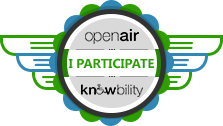I wanted to take a moment to look forward about where I would like to go with my Blog.
This assessment includes looking backward about how far I have come with my Blog.
Self-assessment is one of the gifts from my rehab. After my accident and before I got to rehab, I had an immense difficulty learning from my mistakes. When you cannot learn from your mistakes, you make the same ones over and over. Making the same mistakes over and over again is very frustrating, to say the least.
I am grateful to rehab for giving me back the tool of self-assessment and new learning. Having lost these abilities and having re-gained them, I am very aware of their value in my day-to-day life.
When I started my blog, my goal was to write a blog post once a week. I have accomplished that.
Wow!
Since September, I have written a post each week. So that is roughly 8 months of practice doing a post once a week.
I must admit that doing that writing hasn’t been easy to add to my schedule. But it has gotten easier with time, overall. On the rough weeks, I get my a post out by Sunday. On good weeks, I get it done earlier in the week. But whether my blog post gets published on Tuesday or Sunday, I have been successful in getting one out every week.
Working something new in my schedule is always tough for me. Its a piece of executive functioning that my brain is still working on. And I have other things in my schedule that I need to stay on top of, like moving forward my son and family’s life and a lot of doctors appointments. (I am still working on re-establishing my team of doctors here in Austin). So managing all that takes a lot of work and compensatory strategies. So that has been a tremendous challenge. But I am managing it and it has gotten easier.
My process is usually to write a draft early in the week, give it a day or two, and then go back and edit it and finalize it. That has been really helpful to let it percolate and go back to it.
Sometimes I realize that the topic I first wrote about isn’t what is compelling to me to write that week, so I start anew.
I had tried to post a picture on my blog. I seemed to have dropped the picture around the holidays. It was fun to do them and to think of the theme visually. However, I haven’t learned how to post a picture, so I was dependent on someone else doing that piece for me. Since it was hard enough coordinating my own schedule, I found needing to wait for someone else to help me with that piece was something I did not want to work on just yet. It added to my frustration too much and I find I do better when I don’t do things that add to my frustration level. I have enough frustration to manage with out adding more.
One thing that I have noticed is that I am not good at writing headlines. I chuckled with I realized this. I chuckled because as I reflected on whether this was a brain injury thing or not, I realized it may not have been a strength before my injury. I recall my dissertation adviser, Kip Viscusi, telling me that I needed to learn how to write snappy headings for my dissertation. While I remember when he said that to me, I don’t recall if I learned to write better headings after he made that suggestion.
And, one of the reasons I have difficulty with the title is that I typically sit to write one thought, and as I write I realize that that one thought is usually five thoughts. Or that articulating the thought is much more complicated than I realized before I started writing. So as I try to articulate the thought in a simple way, I sometimes forget to look as to whether the title syncs up with the body of the text.
Another thing that I am cognizant of, but haven’t yet figured out how to do, is make my blog more accessible. I couldn’t use the computer for three years after my injury and still have to use compensatory strategies to use the computer. So I am very aware that I want to make my website and blog as accessible as I can so that someone who has visual issues like the ones I have recovered a lot from, but still have, would be able to read at least some of my blog and website.
I reconnected with the accessibility community at SXSW. I hope to get more help on improving my computer skills and knowledge to make using the computer easier and more efficient for me. And to improve the accessibility of my website and blog.


Recent Comments